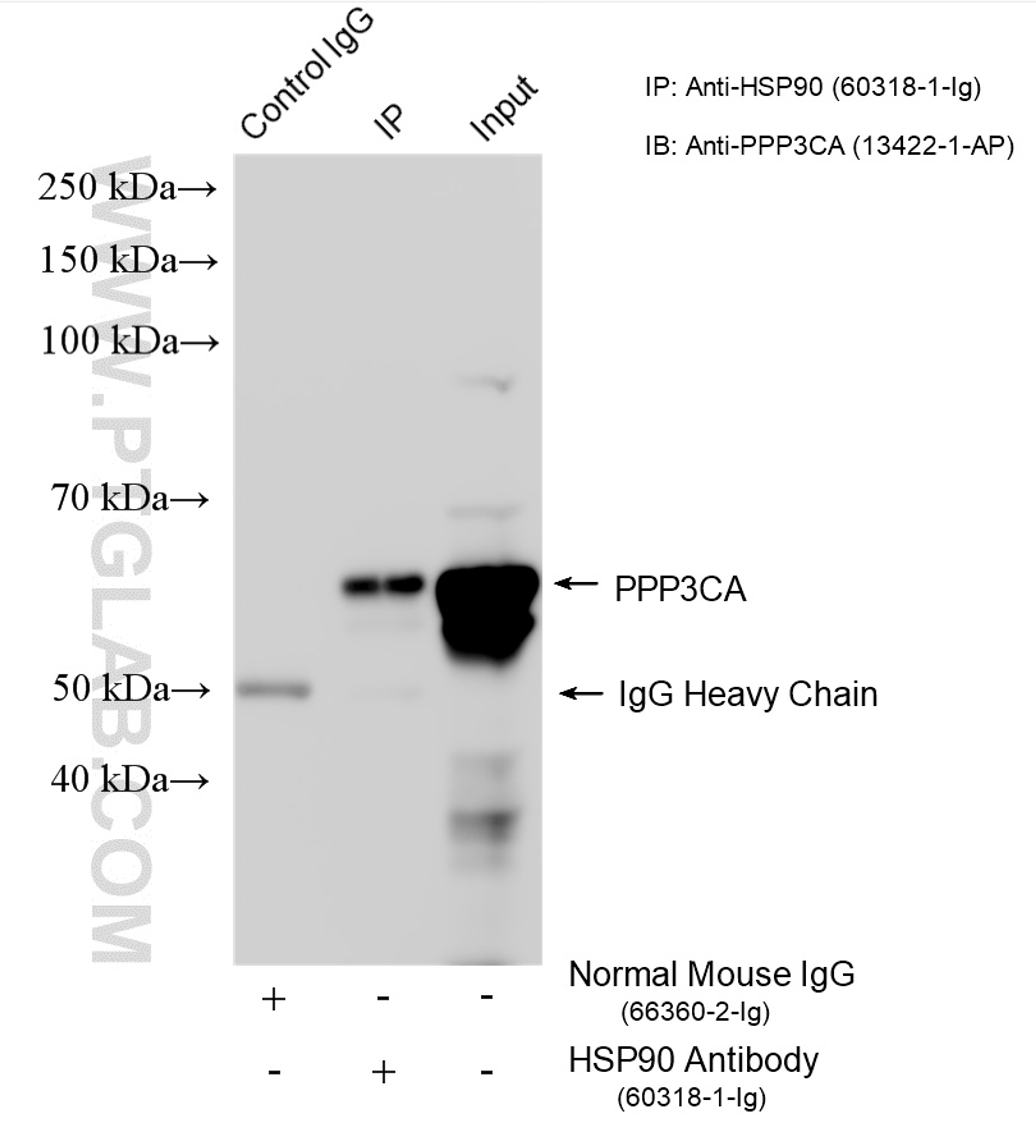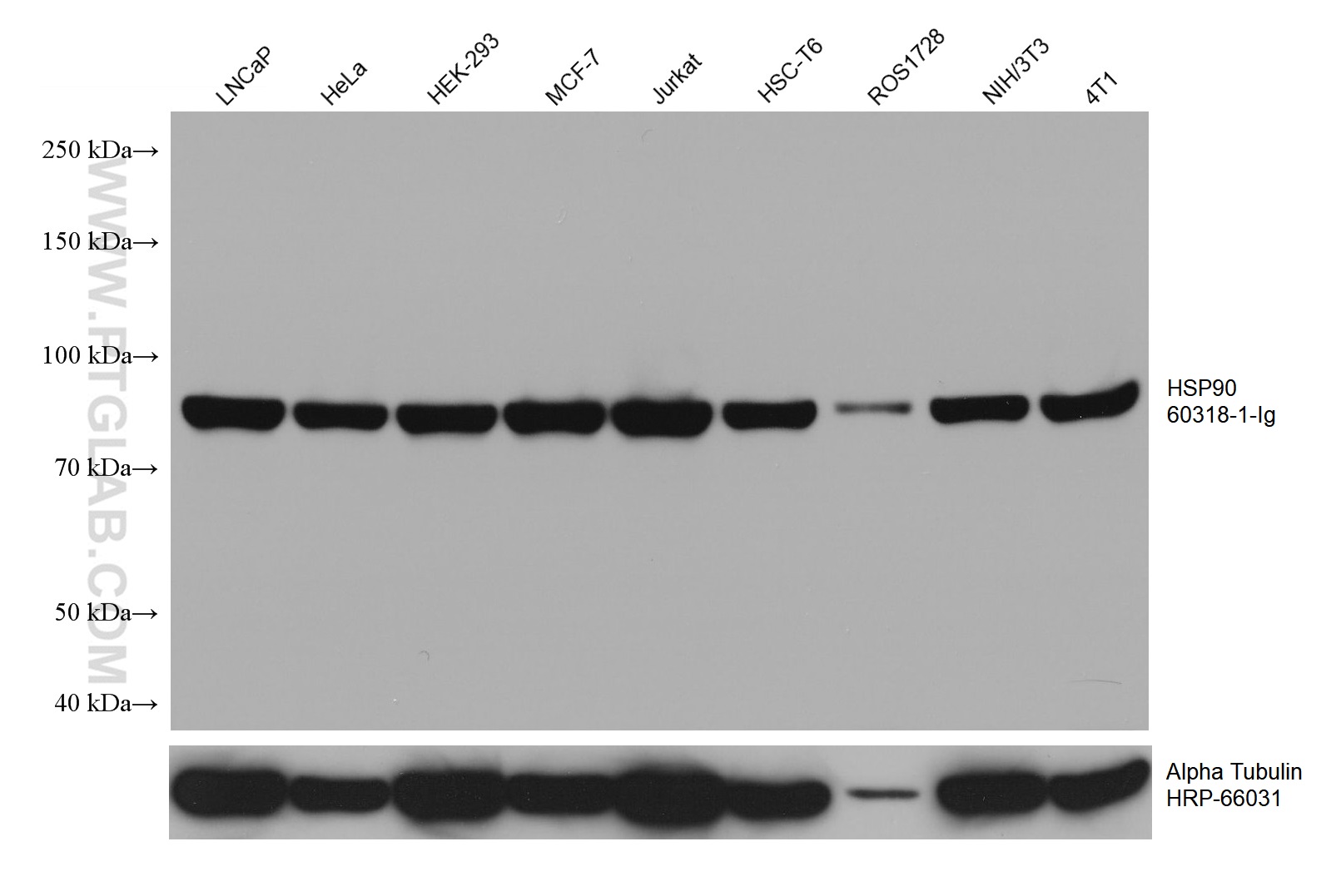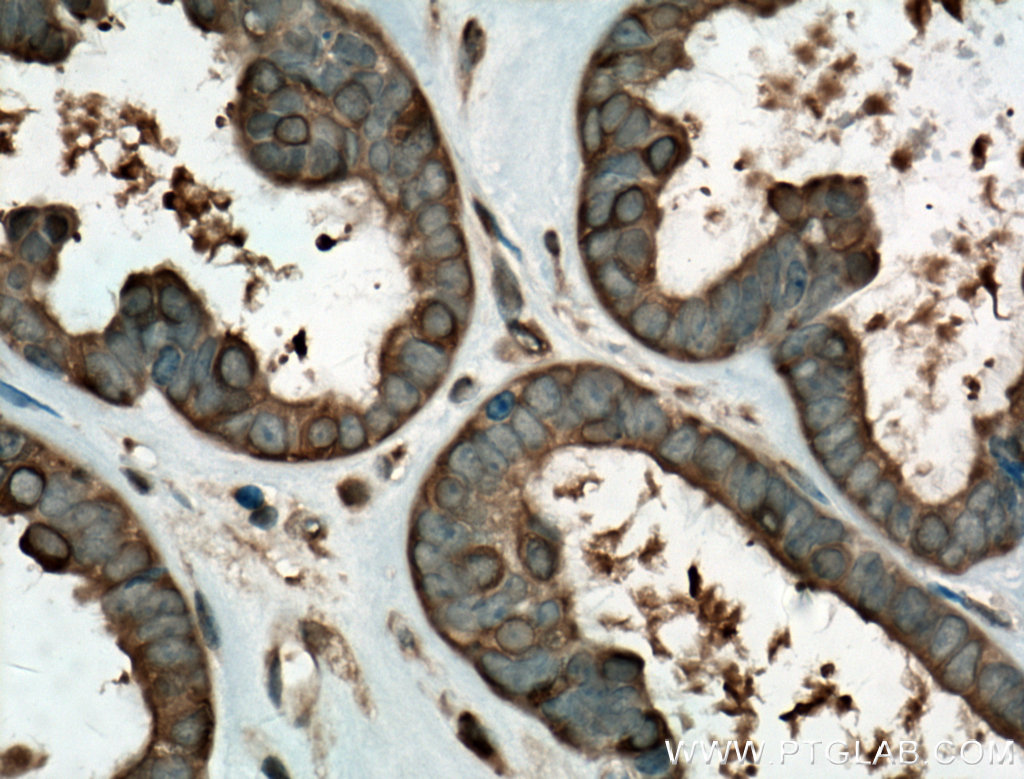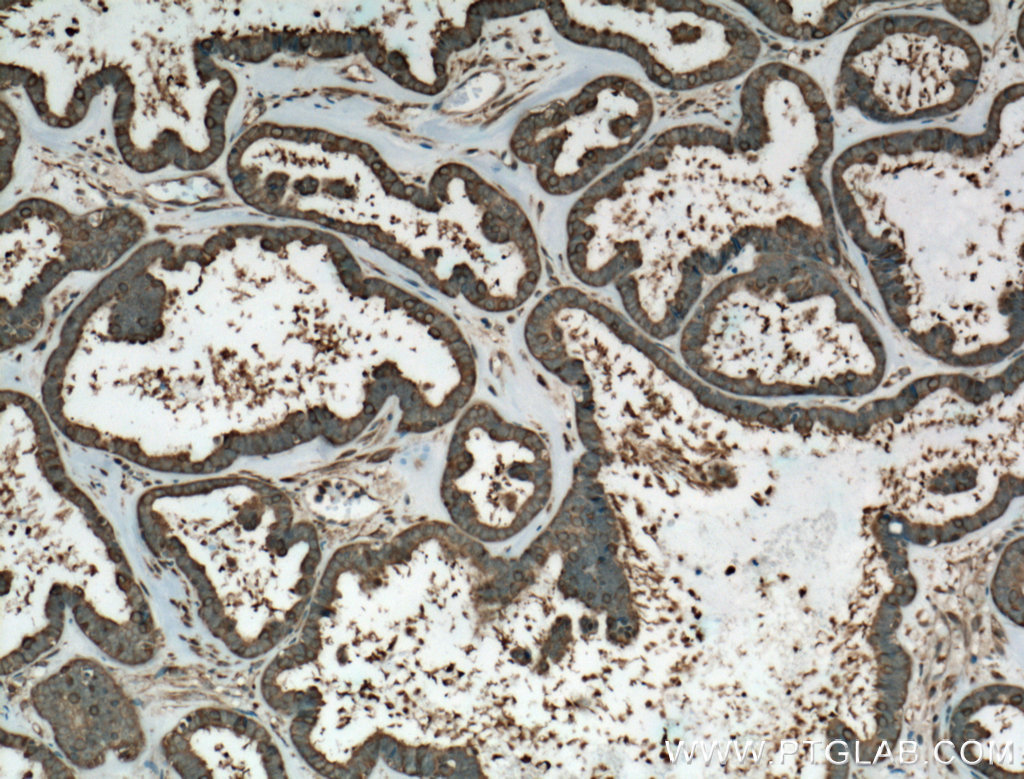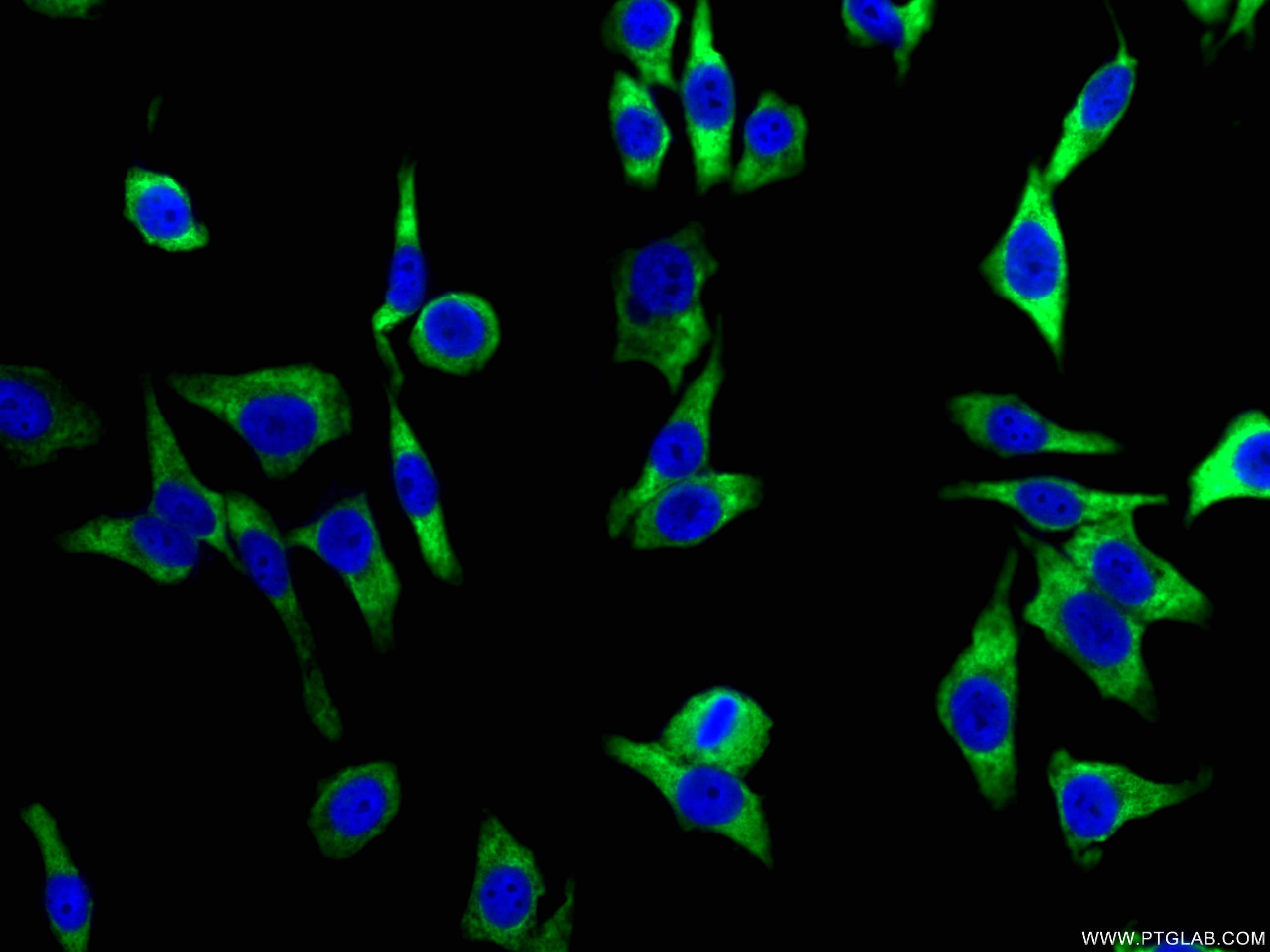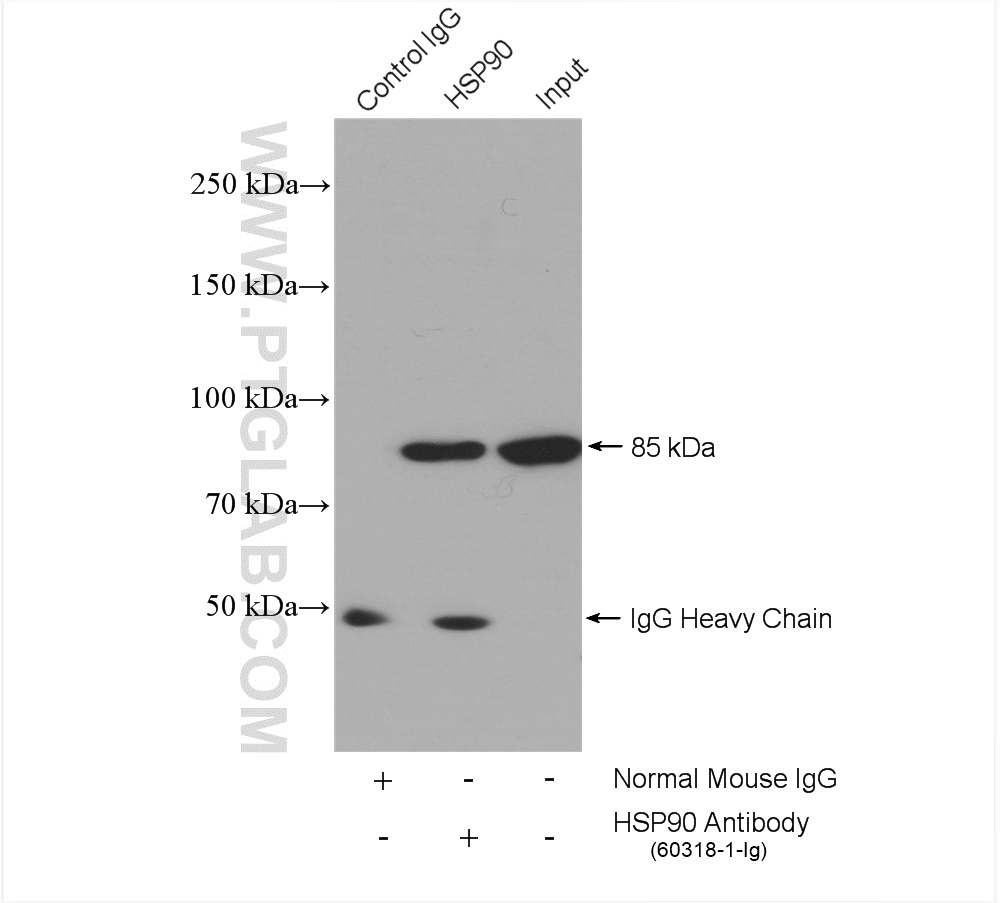验证数据展示
产品信息
60318-1-PBS targets HSP90 in WB, IHC, IF/ICC, IP, CoIP, ELISA applications and shows reactivity with human, mouse, rat, pig samples.
| 经测试应用 | WB, IHC, IF/ICC, IP, CoIP, ELISA Application Description |
| 经测试反应性 | human, mouse, rat, pig |
| 免疫原 |
CatNo: Ag3826 Product name: Recombinant human HSP90 protein Source: e coli.-derived, PGEX-4T Tag: GST Domain: 287-638 aa of BC023006 Sequence: YLNFIRGVVDSEDLPLNISREMLQQSKILKVIRKNLVKKCLELFTELAEDKENYKKFYEQFSKNIKLGIHEDSQNRKKLSELLRYYTSASGDEMVSLKDYCTRMKENQKHIYYITGETKDQVANSAFVERLRKHGLEVIYMIEPIDEYCVQQLKEFEGKTLVSVTKEGLELPEDEEEKKKQEEKKTKFENLCKIMKDILEKKVEKVVVSNRLVTSPCCIVTSTYGWTANMERIMKAQALRDNSTMGYMAAKKHLEINPDHSIIETLRQKAEADKNDKSVKDLVILLYETALLSSGFSLEDPQTHANRIYRMIKLGLGIDEDDPTADDTSAAVTEEMPPLEGDDDTSRMEEVD 种属同源性预测 |
| 宿主/亚型 | Mouse / IgG2a |
| 抗体类别 | Monoclonal |
| 产品类型 | Antibody |
| 全称 | heat shock protein 90kDa alpha (cytosolic), class A member 1 |
| 别名 | HSP90AA1, 3F11C1, EC:3.6.4.10, Heat shock protein family C member 1, Heat shock protein HSP 90 alpha |
| 计算分子量 | 853 aa, 90 kDa |
| 观测分子量 | 85-90 kDa |
| GenBank蛋白编号 | BC023006 |
| 基因名称 | HSP90 |
| Gene ID (NCBI) | 3320 |
| RRID | AB_2881429 |
| 偶联类型 | Unconjugated |
| 形式 | Liquid |
| 纯化方式 | Protein A purification |
| UNIPROT ID | P07900 |
| 储存缓冲液 | PBS only, pH 7.3. |
| 储存条件 | Store at -80°C. The product is shipped with ice packs. Upon receipt, store it immediately at -80°C |
背景介绍
HSP90, encoded by HSP90AA1, is a constitutively and ubiquitously expressed molecular chaperone that is crucial for the stability and function of many proteins. HSP90 provides chaperoning activity for client proteins; many of them are members of oncogenic pathways, indicating its implication in tumor malignancy. HSP90 mainly resides in the cytosol, while it can also be released to the extracellular space. Secreted Hsp90 is a C-terminal truncated form. It has been reported that the level of plasma Hsp90 is positively correlated with tumor malignancy in clinical cancer patients, and can be a promising diagnostic marker for tumor malignancy in clinical application. This antibody may cross-react with HSP90AB1 due to the high homology between them.

